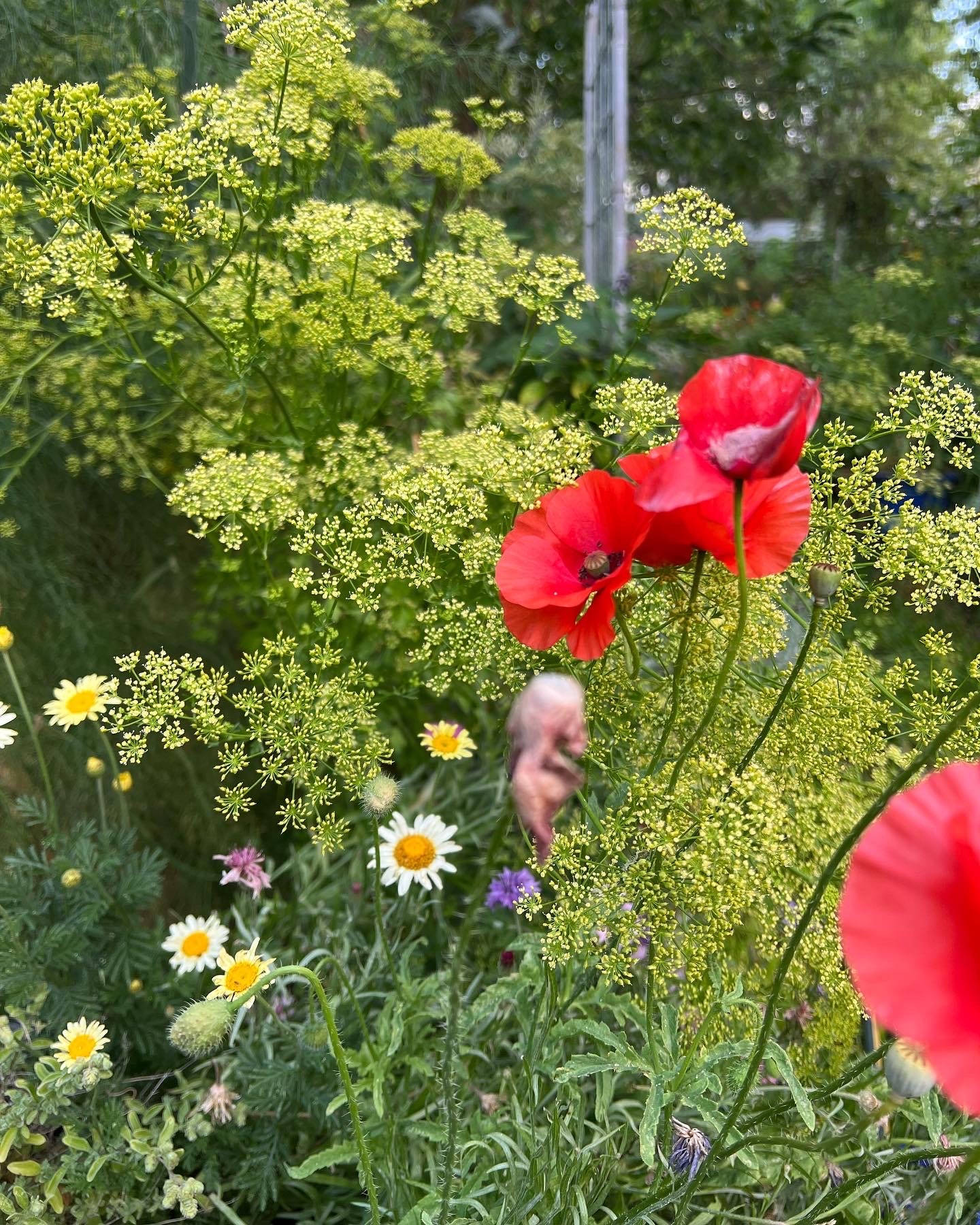'Scatter flowers' will transform your cottage garden!
Seeds to sow NOW using a concept that I only half made up
If you’ve been reading my last few newsletters you’ll know I’ve recently become (even more) consumed by the aspirational idea of totally filling every corner of my garden with plants.
I think it’s a reaction against the feeling of relative emptiness that descends on the garden every winter. I just can’t stand the sight of all the bare, unplanted earth. But the happy truth is, this bare earth that reappears in our gardens every winter actually presents a glorious opportunity: the opportunity to sow scatter flowers!
What are scatter flowers? Well, ok, to be entirely honest, it’s a category of flower I have half made up and half adapted based on the design advice of Piet Oudolf - a European garden designer and the grandfather of naturalistic planting styles. Piet talks about having ‘scatter plants’ - plants that you only semi-intentionally plant. These are tough, self-seeding plants that will pop up in any spaces you’ve left unoccupied, giving your garden a loose, natural feel - like a wild and rambling meadow.
Welcome to Lo fi life, a cheerfully unsophisticated newsletter about gardening, cooking and things that are good. Not subscribed yet? Click the button:
So, today I’ve taken this idea and adapted it to flowers that can happily be scattered through a Perth garden for spring blooms. These flowers have a few common characteristics:
They self-seed easily
The seeds don’t need to be buried - they can be thrown direct on the surface of the soil
The plants will grow to fill the space provided, adding colour and life to all the gaps left in your garden after autumn
They produce gorgeous spring flowers
They’re great for pollinators
You can save the seeds and sow them year after year
See, if the bare earth and rainy skies have been getting you down, scatter flowers are the answer. They need the bare earth - it gives them space to germinate, and the frequent rains help keep the soil moist enough for the seeds to grow with no further effort required from you.
And that is why I love scatter flowers. You don’t even have to bury them. These flowers I’ve selected for you in the list below are ones that can be literally thrown onto the bare soil in a sunny patch of garden and forgotten, and they should reward you for your lazy carelessness with spring blooms.
I say ‘should’ because I can’t 100% guarantee this will work for you every time, because nothing in our gardens is ever a total certainty. The thing with scatter flowers is you have to accept that there will always be a little randomness in the equation. Last year, for example, I sowed a billion poppy seeds - they germinated beautifully but then another uninvited random plant outgrew and outcompeted them (my guess is that I should have sown them in a sunnier location, but I’ll never know for sure). That’s why, for me, scatter flowers will always be a lucky dip, an experiment, and one that works best when you have heaps of seeds you can throw around a little recklessly.
This year I’m scattering seeds for carrots, false queen annes lace, fennel, mustard greens and poppies. Cast a wide net, scatter plenty of seeds, and your garden will almost certainly surprise and delight you. Here are my favourite scatter flowers to throw around NOW for a Perth garden that explodes this spring.
Ageratum
Ageratum is a lovely little self-seeder that has purple or white fluffy flowers that look like teeny versions of the 1990s toy that a quick google informs me is called a Koosh ball. So fluffy and the bees love them!
Borage
Borage is a bit of a garden thug. A ready self-seeder it always appears in my garden of its own volition, with fuzzy, slightly spiky leaves and white or purple star shaped flowers that taste like cucumber (great in G&Ts). Borage is a hardy space filler and great for attracting beneficial bugs to your patch.
Breadseed poppies
AKA opium poppies! These glorious flowers are amazing dotted through the spring gardens, like pink teacups filled with giddy, pollen-drunk bees. The flower heads also look beautiful as they dry too, so leave them in your garden to turn brown, then save the seeds.
Californian poppies
Another gorgeous kind of poppy, Californian poppies cope well with drought. The most common variety has sunshine orange blooms, but you can get them in other colours too. They set seed in pods that spring open in the sunshine, scattering their seeds for next year.
Keep reading with a 7-day free trial
Subscribe to lofi life to keep reading this post and get 7 days of free access to the full post archives.







